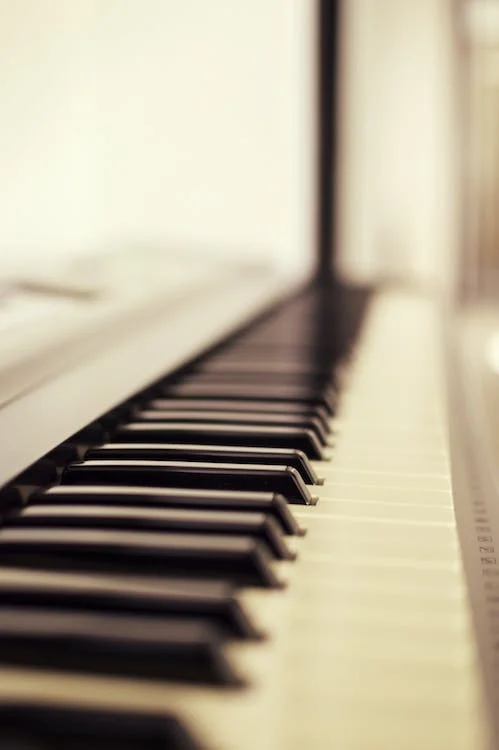Pianos are timeless instruments, with a history that has transcended centuries. Setting up a room for your piano is an exciting journey toward making beautiful music – one that requires time and thought to create the perfect space. From selecting what type of surface your piano should be on, to creating exclusive soundproofing solutions and more, this blog post will provide tips for setting up the ideal playing room for your special instrument. Whether you’re equipping a new home or remodeling an existing space, following these steps can help ensure that you enjoy the best possible experience when producing harmonious notes from your beloved keys.
Preparing the Room – Assess your space and plan accordingly
Preparing the perfect environment for your piano playing can be daunting at first, but it’s important to take the time to assess your space and plan accordingly. Make sure the room has adequate ventilation, as a room that is too hot or cold can affect the sound of your instrument. It’s also important to think about noise control — make sure carpeting, curtains, and furniture are placed strategically to absorb sound and keep your volume levels down. Namely, the people from Lumiere Piano suggest that acoustic treatment of the walls is the single most important factor for making a piano room sound good. Consider acoustic wall treatments if you want to take things one step further. With a little planning and creativity, it’s possible to create a peaceful spot where you can truly enjoy making music!
Furniture Placement and Soundproofing
Finding the perfect spot to set up your piano can be a challenge. A great place to start is by finding a corner of the room that has minimal background noise and static, like traffic or computer hums. Once you’ve identified this area, you’ll want to pay attention to how furniture placement can help absorb sound and enhance the quality of play. It’s easy enough to adjust items such as tables and chairs to make sure they’re forming an effective soundproof perimeter around your instrument; having pillows or other soft materials nearby adds a bit more insulation while still preserving the look and feel of your home. With strategic furniture placement and soundproofing tactics, it won’t be long before you have an ideal setup for your piano enjoyment.
Lighting
When it comes to the ideal lighting setup for your piano, natural lighting is your friend. Being surrounded by natural light while playing can help create a calming atmosphere, allowing you to sink into the sound of your music with ease. If you don’t have access to a lot of natural lighting, make sure that whatever light you are using is gentle and non-intrusive—too much brightness can be distracting and make it difficult for you to focus. Thoroughly consider all of your options; you must choose lighting that won’t interfere with your performance.
Temperature Control
When setting up your piano room temperature is essential to getting the right tone. Temperature fluctuations can have a dramatic effect on the sound of your instrument, causing strings to become too dry or too moist depending on your climate. It’s wise to invest in a good thermometer so that you’ll be able to keep tabs on the climate and ensure that it’s consistently pleasant. This will help ensure that your music is given due attention without interruption from climate troubles – and what better way for an artist to express themselves?
Accessories
Decorating a room for your piano doesn’t have to stop at a music stand and bench. Whether it’s your living room, a recital hall, or just a spare corner of the attic that you’ve transformed into a practice space, why not add some artwork and decorations to make the space feel more inviting? There’s so much you can do beyond simple furniture; pick out framed prints of iconic composers, shining chandeliers for extra pizzazz, and fun wallpaper for an extra-special touch. You can also hang up paintings done by local artists or pick out colorful fabrics that suit the mood and moments you want to play. Get creative! Celebrate this unique opportunity to decorate and make your room attractive as well as functional.
Maintenance
When it comes to taking care of your piano, regular maintenance is a must. Taking time for daily dusting and weekly cleaning will help keep the piano in great condition and ensure its optimal performance with every use. You’ll want to pay special attention to removing accumulated dust from the strings and other small components, as well as wiping down the keys and other external surfaces.
To sum up, setting up a room for your piano requires thoughtful consideration. It’s important to assess the space you have available and plan, determining where your piano should be placed and how it fits into the environment. Taking the time to make sure it is soundproofed, well-lit, climate-controlled, and full of welcoming accessories will help ensure you have a comfortable place to practice and hone your craft. Most importantly, don’t forget to stay on top of regular maintenance so that you can keep playing in peak form for years to come. With these tips in mind, setting up a room for your piano can become an enjoyable part of being a musician!

